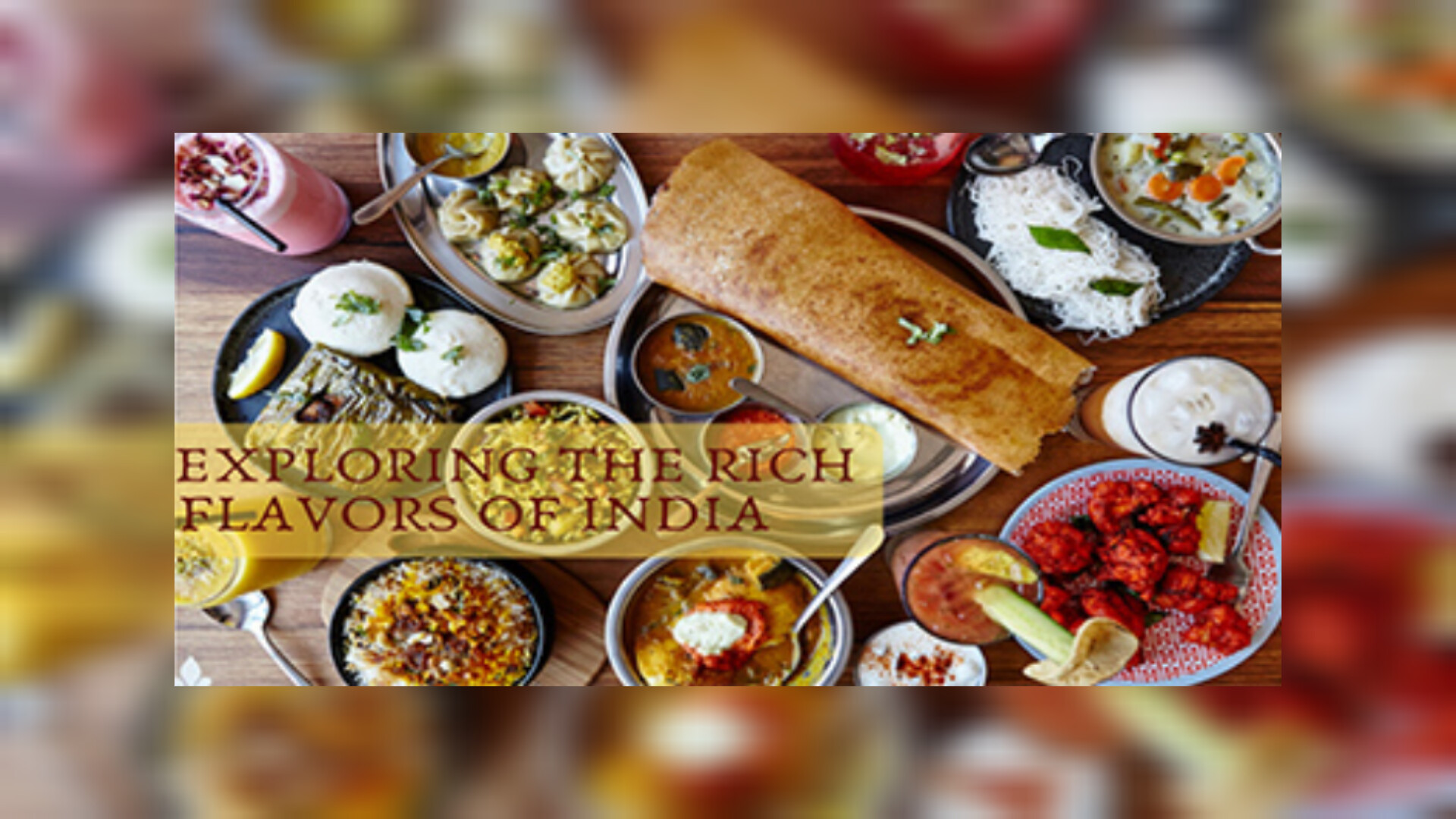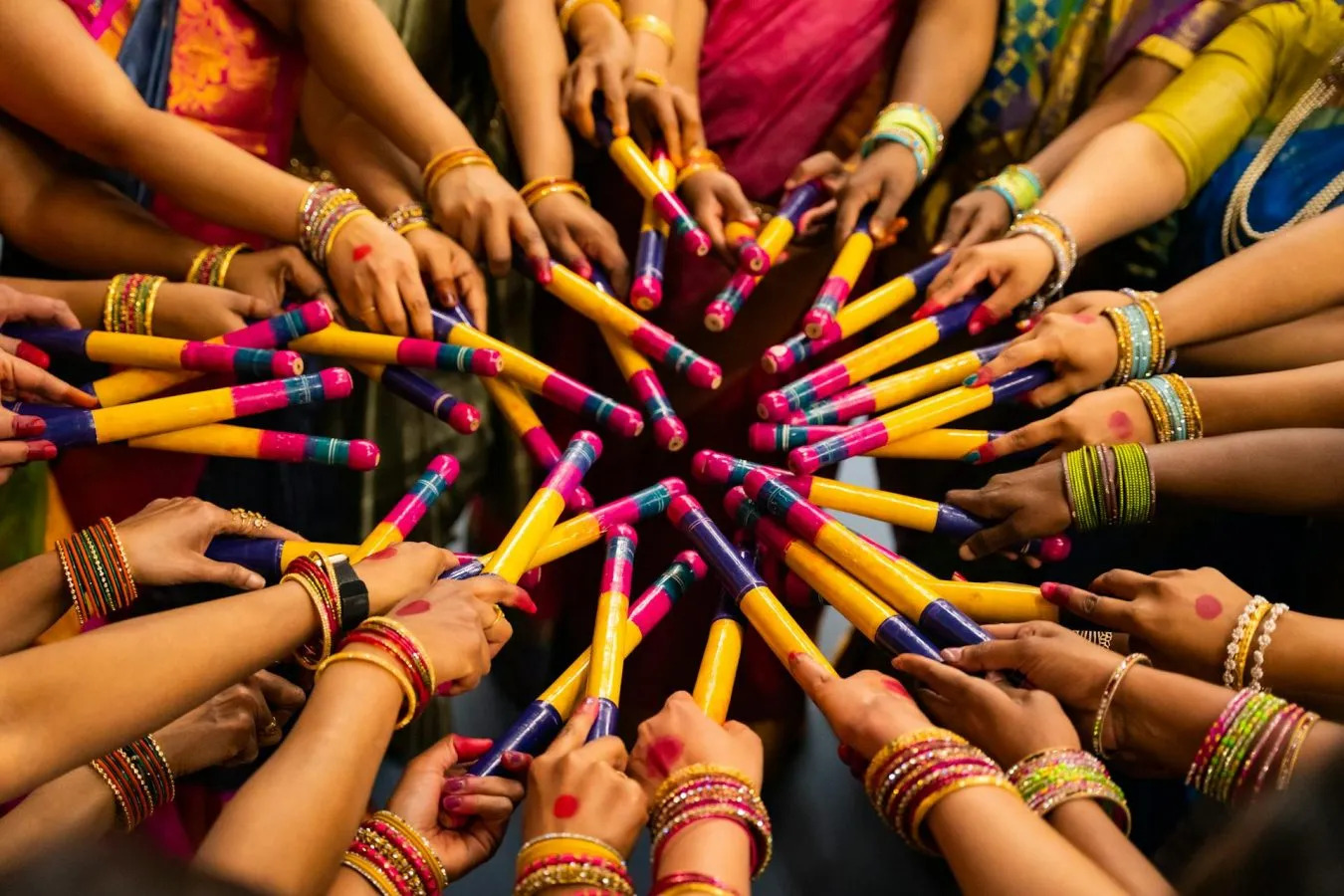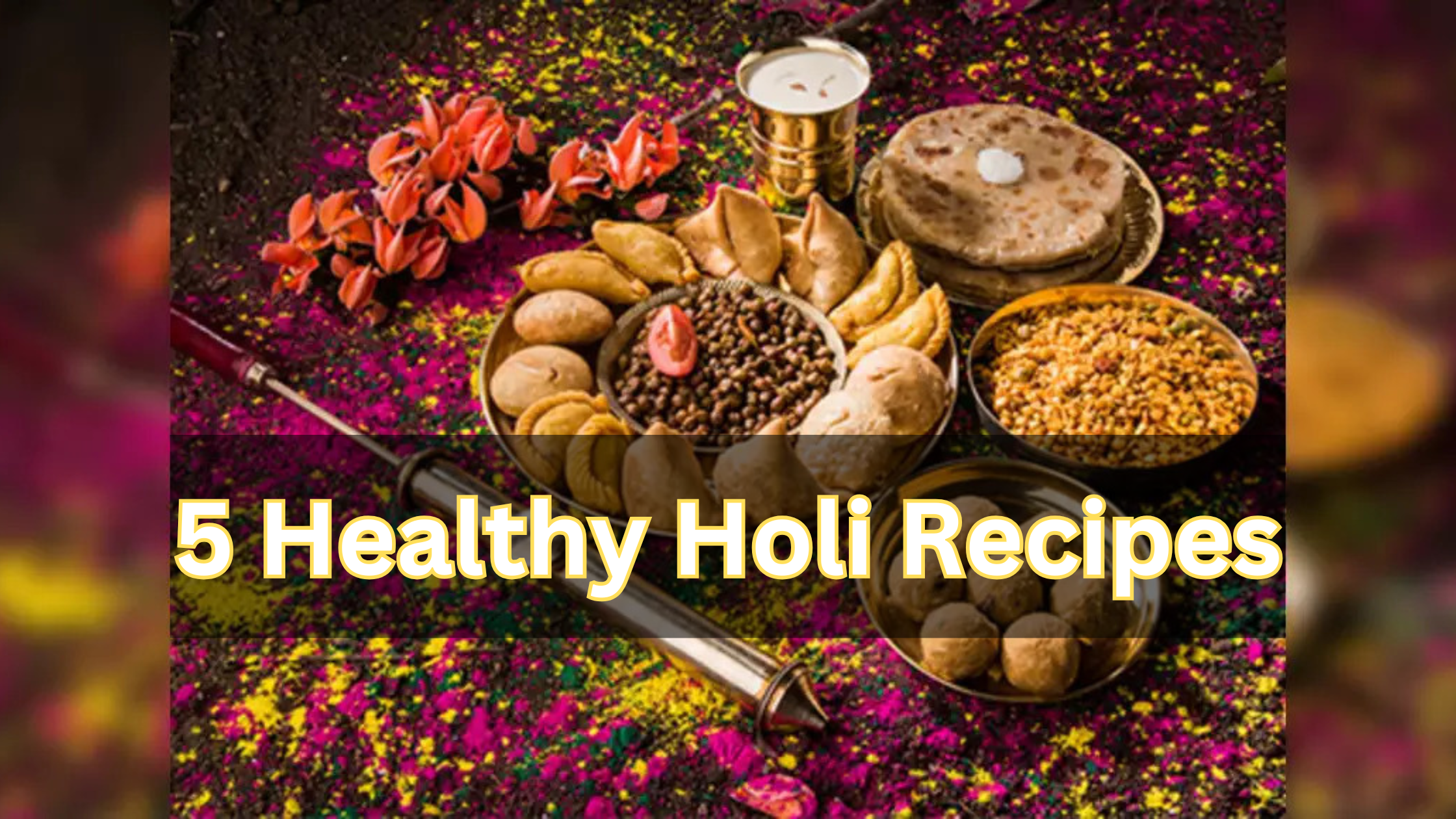Centuries of culinary heritage, and regional diversity have a vibrant taste of traditional food in India. Indian cuisine showcases its various flavors, ingredients, and cooking techniques, which generations have passed down. In the North, cooks use aromatic spices to create complex curries. The South is famous for its delicate dosas. Meanwhile, the East features fish curries.
Traditional Indian Foods, like butter chicken, masala dosa, vada pav, and biryani showcase Indian culture. They unite people with their shared love for delicious food.
Butter Chicken: Delhi
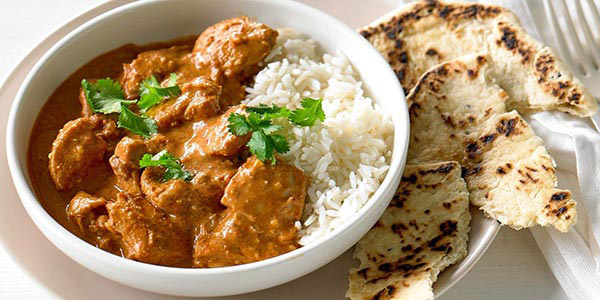
Traditional Food In India: Butter Chicken
Murgh Makhani, or butter chicken, is a popular North Indian dish that originated in Delhi. Cook and marinate tender chicken in yogurt and spices to make the sauce. Also, It has a creamy tomato-based texture. Pair the dish with naan bread or basmati rice to enjoy a comforting and indulgent meal with a complex taste profile.
Butter chicken, a popular Indian dish, is provided with calcium and health benefits through being a protein-rich and healthy food with spices. But, It should be consumed in moderation for weight management and cholesterol concerns.
Fish Curry: Goa
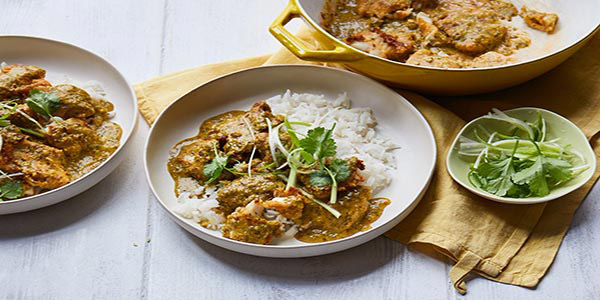
Traditional Food In India: Fish Curry
A coconut-based sauce with spices and herbs simmers fresh fish to create the popular Goa dish, fish curry. This dish is a signature of Goa, demonstrating the state’s passion for seafood and bold flavors. The recheado masala paste flavors the Goa curry with its fieryness. Favorite among locals and visitors is it, often served with steamed rice or traditional Goa bread.
Fish curry is a delicious and nutritious dish rich in essential nutrients like protein, omega-3 fatty acids, vitamins, and minerals. Equally, it promotes overall well-being, reduces the risk of cardiovascular diseases, aids in muscle repair and growth, and supports bone health, immune function, and thyroid regulation. In addition, the spices used in curry also have anti-inflammatory and antibacterial properties.
Makki Di Roti And Sarson Da Saag: Punjab
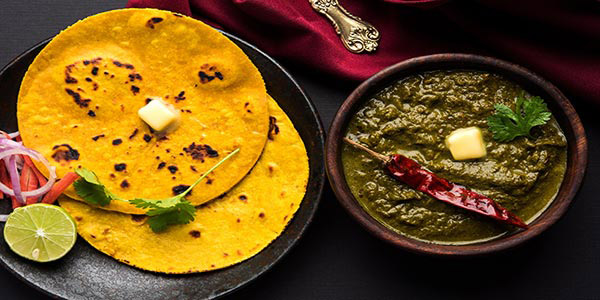
Roti and Sarson da saag are celebrated for their unique flavors and textures as Punjabi dishes. On the other hand, Sarson da saag is a savory dish prepared with mustard greens, spinach, and spices. In contrast, roti is a golden flatbread made from maize flour.
A traditional Punjabi dish, is gluten-free, fiber-rich, and weight-management-friendly. Sarson da saag, a curry made from mustard greens, is rich in vitamins, antioxidants, and minerals. The dishes, sourced locally, are prepared to promote sustainability and celebrate flavor, culture, and well-being.
Vada Pav: Maharashtra
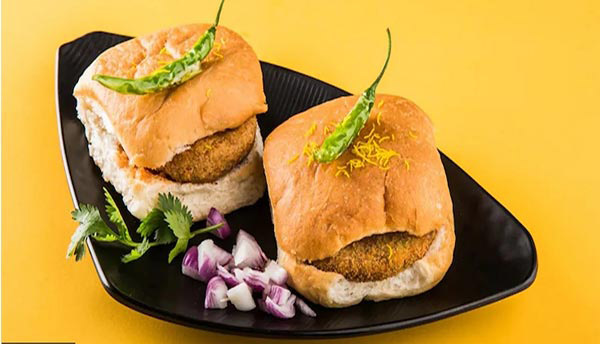
Traditional Food In India: Vada Pav
Vendors commonly sell a spiced potato fritter called Vada Pav on the streets of Maharashtra, India. They prepare it by mashing boiled potatoes with green chilies, ginger, garlic, and various spices, then shaping and deep-frying the mixture. They pair it with a soft pav bun and slather it with green chutney and tamarind sauce, also deep-fried. The irresistible combination creates a culinary symbol, representing the vibrant street food culture of the region.
It’s a convenient, affordable, and health-promoting meal suitable for busy schedules. The potato filling provides carbohydrates, while spices aid digestion and metabolism. The diverse flavors and textures stimulate taste buds, making Vada Pav a beloved dish.
Dhokla: Gujarat
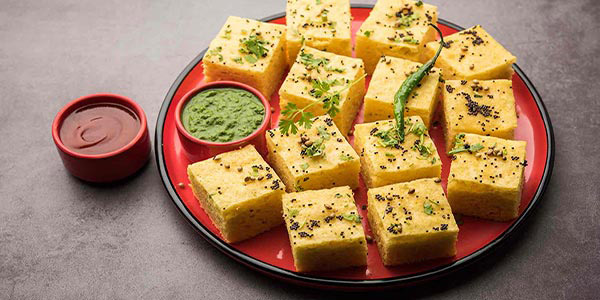
Traditional Food In India: Dhokla
The fermentation process involves using Gujarat rice and chickpea flour to make Dhokla. Additionally, its texture is light, and its taste is tangy due to the inclusion of green chilies, ginger, and mustard seeds. In Gujarat, Dhokla is a favored choice for both snacks and breakfasts, showcasing the region’s affinity for nutritious, savory, and vegetarian dishes.
However, Its fermentation process enhances digestibility and promotes good health. Dhokla is low in calories and fat, making it a healthy choice for weight management. Its high fiber content promotes satiety and helps control appetite. Customizing Dhokla with toppings adds flavor and nutritional value.
Pongal: Tamil Nadu
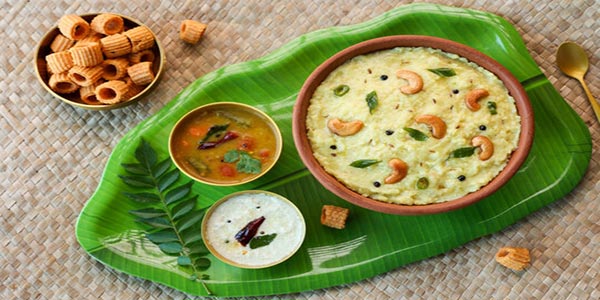
During the harvest festival in South India, Pongal, a dish, represents abundance and prosperity. The chef prepares this with freshly harvested rice, moong dal, ghee, cashews, cumin, black peppercorns, ginger, curry leaves, and asafoetida, and it has a savory taste. However, The ingredients cook together the rice and lentils. People often serve roasted cashews and raisins hot as a favorite breakfast or festive feast addition.
It provides a balanced nutritional profile with complex carbohydrates and proteins, and health benefits like anti-inflammatory properties, digestion aids, and antioxidant properties. Cooked in ghee, it provides healthy fats for brain function and overall well-being. Pongal helps maintain a healthy weight and prevents overeating.
Litti Chokha: Bihar
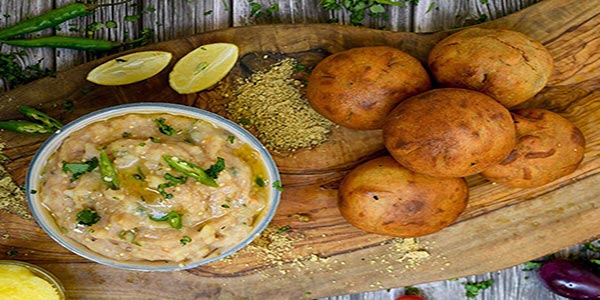
The spicy mixture of roasted gram flour, herbs, and spices is stuffed into whole wheat dough balls to create Litti Chokha, a traditional food in India from Bihar. Its charm and flavorful simplicity are renowned. Chokha, a side dish that accompanies the main course, comprises mashed eggplant, tomatoes, onions, and green chilies. It is seasoned with mustard oil, salt, and lemon juice. Litti Chokha is a cultural symbol of Bihar’s culinary heritage, savoring earthy flavors and comforting goodness.
Dhaam: Himachal Pradesh
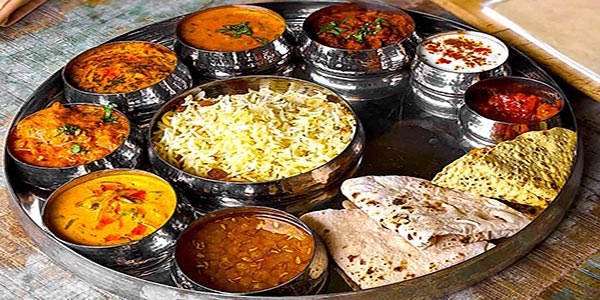
During special occasions and festivals, people display and showcase the regional Dhaam food of Himachal Pradesh, reflecting the cultural heritage and traditionally featuring as feasts. “Madra,” “Khatta,” and “Rajmah”. The special treat is offered as “Mittha.” Made from rice, sugar, and dry fruits, “Mittha” is a sweet dish. Dhaam food symbolizes the warmth and hospitality of Himachali traditions. Furthermore, it promotes health and community celebration.
Daal Baati Churma: Rajasthan
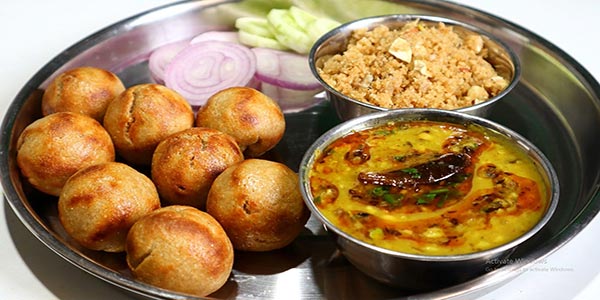
Traditional Food In India: Daal Baati Churma
In this Rajasthani dish, a curry, hard wheat bread, and sweet crumbled bread are prepared and consumed. The dish is prepared with spices, including cumin, coriander, and red chili powder. Baati, when traditionally baked over charcoal or in a clay oven, becomes crisp and soft. It is often dipped in ghee. Churma, made by crushing Baati, adds a touch of sweetness to the dish.
The nutritious meal, Daal Baati Churma, consists of lentils, whole wheat dough balls, and Churma in Rajasthani cuisine. These foods contain protein, fiber, and B vitamins, and they include spices like turmeric and cumin for antioxidant advantages.
Bajara Khichri: Haryana
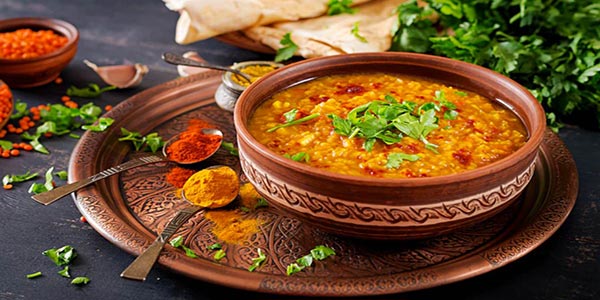
Bajara Khichri is made with bajra, moong dal, and spices like cumin, coriander, and turmeric in Haryana. It is a common practice in Haryanvi households, particularly during winter. It symbolizes the region’s agricultural heritage, often prepared with vegetables. Also, It is served lastly with ghee and pickle, making it a satisfying Haryanvi cuisine.
Bajra khichdi is a nutritious Indian dish made from bajra, lentils, and vegetables. It’s rich in fiber, protein, and vitamins, making it beneficial for digestion, muscle repair, and growth. The low glycemic index makes it suitable for diabetes patients. However, The inclusion of vegetables boosts overall health and immune system, making it a beneficial addition to any diet.
Tunday Kabab: Uttar Pradesh
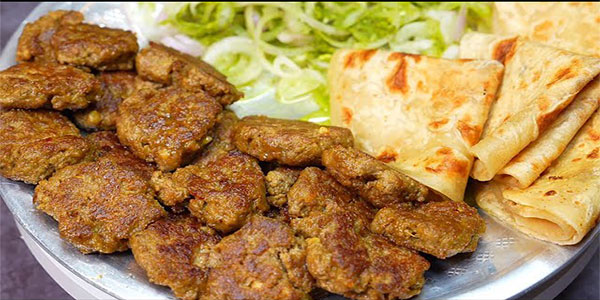
A blend of spices and minced meat, known as Tunday Kababi, is a renowned culinary delight hailing from Uttar Pradesh, India. Its origins can be traced back to Lucknow. The symphony of flavors infuses the meat in the secret recipe, passed down through generations. Furthermore, cooked on skewers over charcoal, it offers an indulgent and unforgettable culinary experience, making it a cherished gem in Uttar Pradesh’s culinary landscape.
The individuals in Lucknow prepare a dish known as Tunday Kabab, which consists of minced meat, spices, and herbs. They then serve this meal with salad greens and yogurt-based sauces. It is a protein-rich dish with anti-inflammatory properties that they consume after preparing it in this manner.
Momos: Sikkim
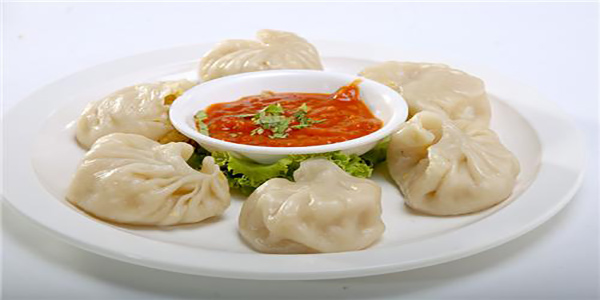
The diverse communities in the region greatly influence and adore Momos, the delectable dumplings in Sikkimese cuisine. These dumplings are either steamed or fried, derived from Tibetan cuisine, and stuffed with minced meat, vegetables, or cheese. The local ingredients used in Sikkimese cuisine highlight its uniqueness and reflect the warmth and hospitality of the Sikkimese culture.
Savory dumplings, also known as momos, are filled with vegetables, meat, or both and can be steamed or fried. They are provided as a nutritious alternative to fried snacks and are a popular Tibetan dish.
Dosa: Karnataka
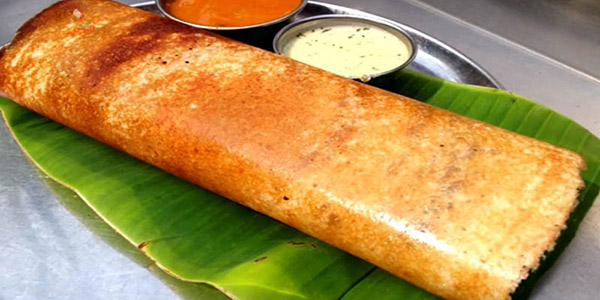
Traditional Food In India: Dosa
In Karnataka, India, dosa is a cherished dish. People prepare this South Indian delicacy, originating from the southern region, with a fermented batter of rice and urad dal. The crispy texture, aroma, and versatility make it a culinary experience for further enjoyment. Various accompaniments are used to enjoy dosa, showcasing the rich culinary heritage of Karnataka. CLICK to get the full recipe.
Dosa, a South Indian dish, is made from fermented rice and lentil batter and is gluten-free. This food is rich in carbohydrates and protein while being low in calories and fat. The probiotics in it promote gut health. Serving it with sambar and chutney adds to its health benefits. You can incorporate dosa into your diet, contributing to your overall well-being.
Biryani: Hyderabad
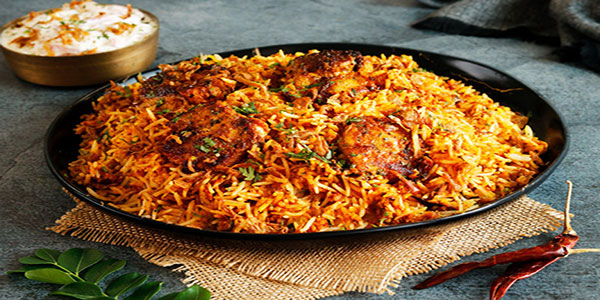
The Nizams’ kitchens hail the culinary masterpiece known as Hyderabadi Biryani, which embodies the rich heritage and diverse flavors of Hyderabad. This dish features aromatic spices and fragrant basmati rice.
People prepare biryani, a balanced Indian meal, with meat or vegetables, rice, and spices. The properties of turmeric, cardamom, and cloves promote overall well-being and offer antioxidant and anti-inflammatory benefits. These ingredients, including garlic, ginger, and onions, are beneficial for heart health. Slow cooking minimizes the use of oil and fat during the process, making it a healthier option compared to fried dishes.
Beef Roast: Kerala
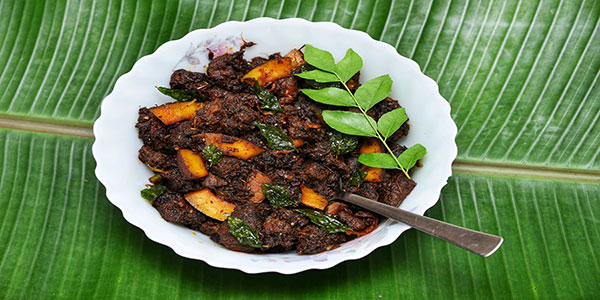
In Kerala’s rich and diverse culinary tradition, people traditionally prepare the dish known as Kerala’s beef roast with rich flavors and aromatic spices, blending indigenous ingredients and diverse cultures. They serve marinated beef chunks with Appams or rice, reflecting the region’s culinary heritage. This dish is a centerpiece of feasts and gatherings, showcasing the region’s culinary heritage. It is furthermore a significant element of celebrations.
Beef roast provides essential protein, vitamins, and minerals for muscle growth, immune function, and cognitive health. It is a nutritious and delicious meal. The slow cooking process satisfies and fills, helping to curb cravings. Also, It allows flavors to blend, making it a satisfying addition to a balanced diet.
Rasgulla: West Bengal
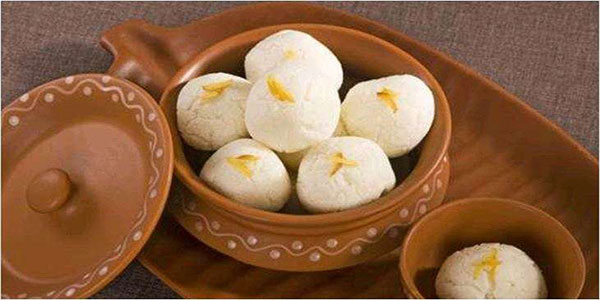
Someone makes the syrup from sugar, and someone makes Rasgullas from curdled milk. Originating in ancient temples in Puri, Odisha, it gained popularity in Kolkata during the 19th century. Additionally, people symbolically represent this dish during festivals and festivities in West Bengal as a part of the region’s culinary tradition. Furthermore, they also commonly use it in daily life.
Rasgulla, an Indian sweet delicacy made from cottage cheese, is a protein-rich treat with high sugar content. Also, It provides a quick energy boost and calcium for bone health. Moderation is key due to its sugar content, but occasional indulgence can be a nutritious choice.
Kafuli: Uttarakhand
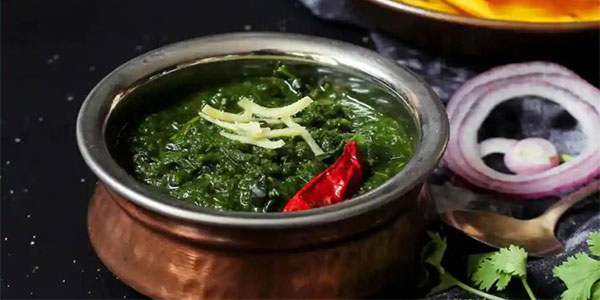
Traditional Food In India: Kafuli
In Uttarakhand, India, the vegetables used to make Kafuli include spinach, fenugreek, and amaranth. Also, It is a nutritious powerhouse, cooked with spices, and rich in vitamins, minerals, and antioxidants. This dish is typically accompanied by steamed rice or chapati, showcasing the region’s rustic charm and culinary heritage.
We prepare Kafuli in Uttarakhand, India, using spinach and spices. This dish offers excellent nutrition. Because of The high nutritional value, antioxidant, anti-inflammatory, and digestive properties make it a healthy choice for more people. Individuals of all ages and dietary preferences can prepare a kafuli meal with a minimal amount of oil.
Dalma: Odisha
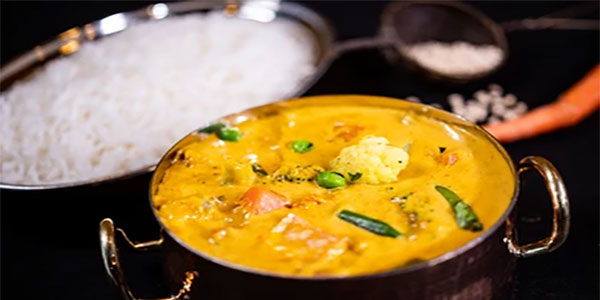
People in Odisha use a hearty and nutritious combination of vegetables and spices to prepare Dalma. It’s a symbol of unity and harmony, often prepared during festivals and special occasions. The stew highlights Odisha’s culinary heritage and you can enjoy it with steamed rice or savor it on its own.
Chefs make Koat Dalma, a renowned delicacy for its nutrition, using split yellow dal, vegetables, and spices. Also, It is a dish that comes from Odisha in India. This food item has a high protein content, making it a good option for vegetarians and vegans. Additionally, it contains vitamins, minerals, and fiber, which support digestive health. The use of spices like cumin and turmeric enhances its flavor and medicinal properties. Lastly, regular consumption aids in weight management and immune system strengthening.
Koat Pitha: Mizoram
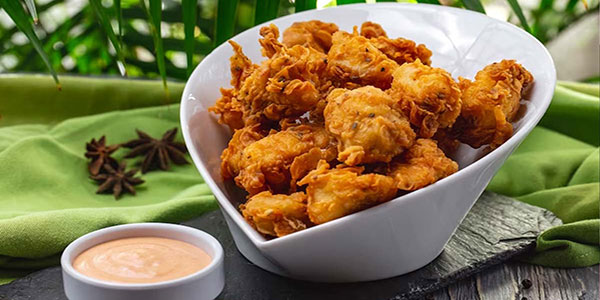
Golden brown deep-fried Koat Pitha is the beloved Mizoram delicacy, made from rice flour, jaggery, sugar, and spices, with traditional flavors. The dish in Mizoram represents the culinary tradition, community, and shared memories through communal dining. Also, It symbolizes festivity and the collective remembrance of moments around the table.
Furthermore, Koat Pitha is suitable for all ages and promotes cultural heritage and culinary satisfaction. In addition, it is a wholesome option that further fosters the preservation of tradition and personal enjoyment. Also, Its simplicity makes it a delightful and nutritious choice for any occasion and traditional food in India.
Poha: Madhya Pradesh
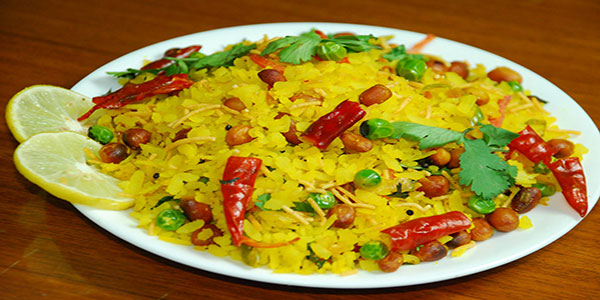
Traditional Food In India: Poha
In Madhya Pradesh, people prepare Poha, a popular breakfast dish, by using flattened rice made from parboiled rice. Especially, They soak the rice in water and stir-fry it with spices like mustard seeds, turmeric, curry leaves, and green chilies. Households across the state cherish Poha for the warmth, simplicity, and hospitality it symbolizes. Its popularity extends beyond Madhya Pradesh, earning admiration for its delicious taste and nutritional value.
In Indian cuisine, people make Poha, a dish from flattened rice that offers several nutritional benefits. Also, It is easily digestible, low in calories and fat, and does not contain gluten. Furthermore, one can customize Poha by incorporating a variety of vegetables, nuts, and spices. Essential nutrients abound in it, providing extra energy. Similarly, It can well-cater to individuals with digestive issues. You can enhance the taste and nutritional value of it through customization.
Thukpa: Arunachal Pradesh
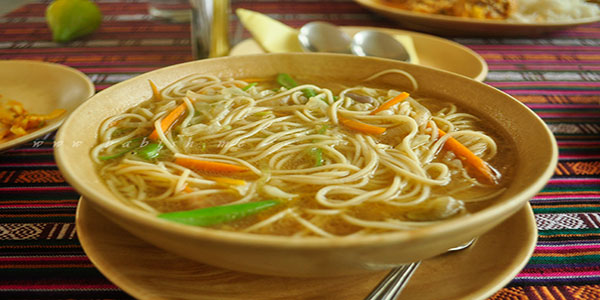
Traditional Food In India: Thukpa
Thukpa, a hearty noodle soup from Arunachal Pradesh, is a culinary emblem of the region, reflecting its rich cultural tapestry and diverse flavors. A dish prepared with fresh vegetables, spices, and meat or tofu, originating from northeast India, embodies a sense of communal spirit and provides a wholesome medley of proteins, carbohydrates, and vitamins.
Thukpa, a nutritious dish containing fresh vegetables, vitamins, minerals, and antioxidants, promotes well-being and immunity. Similarly, Its protein-rich ingredients aid in muscle growth and repair. Thukpa is warm, comforting, and versatile, catering to various dietary preferences. It celebrates Arunachal Pradesh’s culinary heritage and cultural significance.
Rogan Josh: Jammu and Kashmir
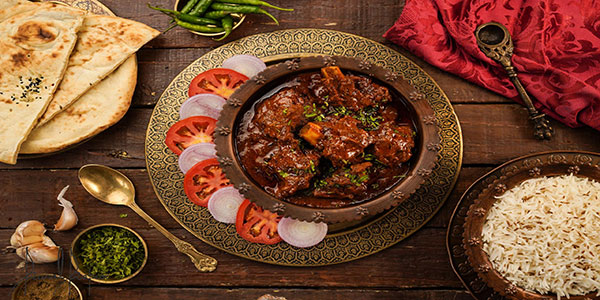
Traditional Food In India: Rogan Josh
Rogan Josh, a Kashmiri dish, is a fiery, rich gravy infused with spices like turmeric, cumin, and ginger. It features tender meat chunks cooked in a vibrant gravy, often lamb or goat. Rogan Josh is a symbol of Kashmiri heritage and tradition, enjoyed with naan bread or fragrant rice.
Therefore, The dish offers health benefits, including anti-inflammatory properties and muscle growth. Furthermore, it’s rich in antioxidants and anti-inflammatory properties, aiding in immunity and fighting infections. Generally, the meat provides amino acids for muscle repair and growth. Furthermore, the spices aid digestion. Lastly, When served with steamed vegetables or whole-grain rice, it’s a satisfying and nourishing meal.
Thekua: Jharkhand
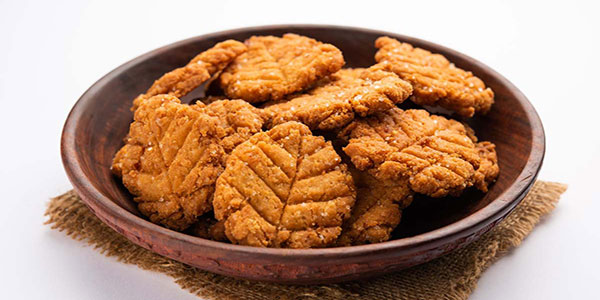
Traditional Food In India: Thekua
Thekua is a traditional sweet snack in Jharkhand, India, made during festive occasions like Chhath Puja. Made from wheat flour, jaggery, and ghee, it’s a delightful fusion of flavors and textures. Thekua symbolizes blessings, prosperity, and goodwill, and its ingredients are rich in energy and nutrients. Although, It’s a symbol of Jharkhand’s culinary heritage, bringing joy and sweetness to every occasion. Also, It’s a healthful treat, providing dietary fiber, iron, and essential minerals.

